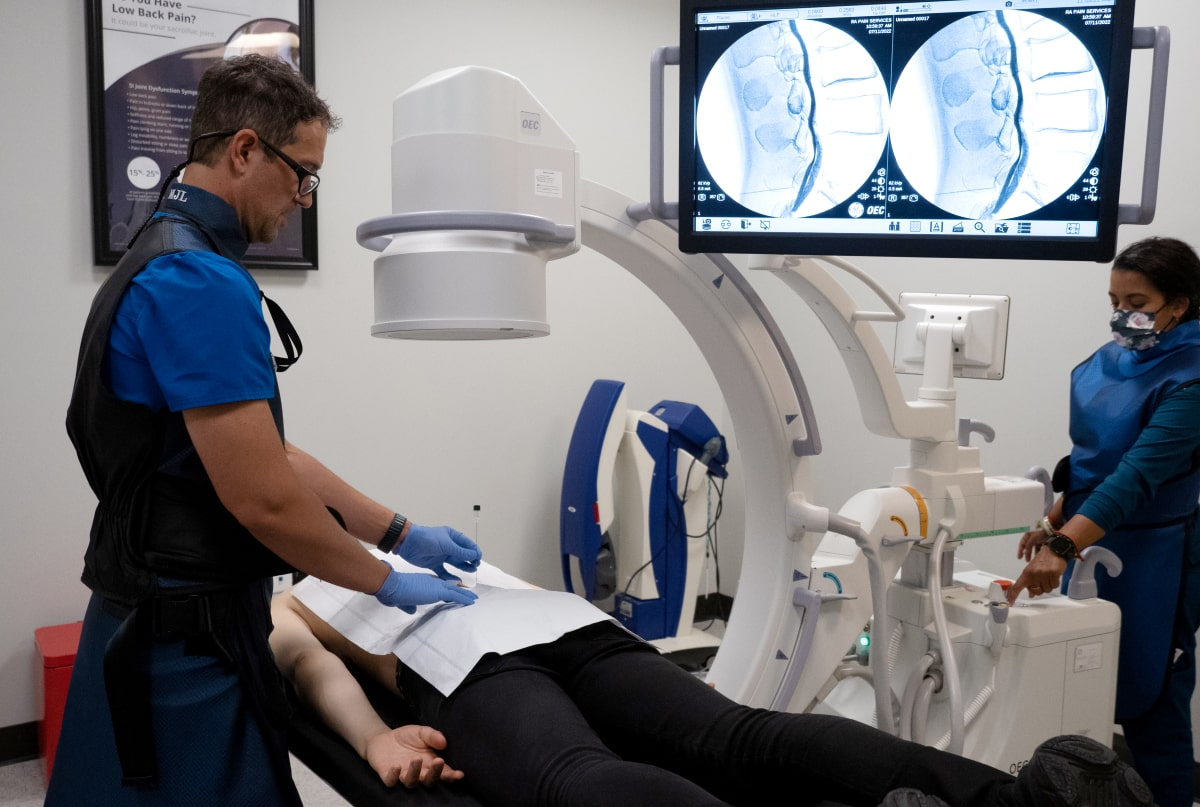- October 6, 2022
To Everything There Is A Season: Chronic Pain & Seasonal Changes
To Everything There Is A Season: Chronic Pain & Seasonal Changes
Can pain change seasonally? Does chronic pain worsen during the cold, or just become more noticeable? What exactly is barometric pressure and how much control does it have over what you’re feeling?
Perception vs Truth
Some people may tell you that pain is pain. How can the weather influence what you’re feeling? Others will respond differently. Of course the temperature, the pressure, the level of moisture in the air outside can determine how much pain you’re experiencing. How can it not? Seasonal Affective Disorder (SAD) is a known and documented affliction, after all. Still others may even say that yes, sudden changes in temperature can impact your aches and discomfort, but only psychosomatically, only in your mind.
The actual answer, like most things, is complicated, but the fact is that yes, the weather you experience – the climate you live in – can have an enormous effect on how you feel.
Take the relationship between cold weather and blood pressure. According to Francisco Lopez-Jimenez, M.D., “blood pressure generally is higher in the winter and lower in the summer. That’s because low temperatures cause blood vessels to temporarily narrow.” (This may be true especially in the elderly.) And though results may vary across different swaths of people, if weather can affect blood pressure, it can affect chronic blood pressure conditions, such as hypertension.
Blood pressure is one thing. But according to WebMD, the weather can also in part determine the severity of pain and stiffness in Rheumatoid Arthritis.
“Experts aren’t sure why seasonal changes affect RA, but it may be linked to shifts in barometric pressure.
Changes in barometric pressure can make your tendons, muscles, and scar tissue expand or contract, which may lead to pain. When it rains or snows, there’s a drop in barometric pressure, which may also thicken the fluid in your joints. That can lead to stiffness and make you more sensitive to pain.”
Though one’s mood and mentality does play a role in the seriousness and persistence of aches and pains (which is a whole other topic on its own), discomfort – especially chronic joint, tendon, and muscle pain – can absolutely correspond with extremes in weather.
Cold Weather vs Warm Weather
Cold weather is the biggest culprit for increased pain, at least anecdotally. Uchicago writes that yes, sudden drops of temperature or changes in the air may contribute greatly to how one’s feeling, whether or not their chronic conditions are due to flare up, especially in joint and muscle tension or pain. There’s still a lot we don’t know, true, but there is a correlation.
Nerve pain, for instance, is greatly affected by the cold. Those with oversensitive nerves or neuropathy may often experience an increase in nerve receptivity. Why? Because “blood flow slows in your outer extremities when your body is exposed to cold. Nerve pain — especially in your hands and feet — increases as your circulation decreases.”
But before you pack up to move to Florida, remember that heat and humidity can also play their part. Where the cold weather tends to constrict blood flow, warm weather expands, which may cause issues with the swelling of joints or tendons. Arthritis, MS, or Fibromyalgia may all be affected by the heat and the rising of one’s body temperature.
How To Help Your Pain
Those who suffer from persistent or chronic conditions or pain can all probably tell you what effect the seasons have on their health and how they’re feeling. People know their pain, and they know their triggers. And being familiar with what causes discomfort – or what causes an increase in chronic pain – is the first and most important step you can take. Keep a list, take note of what is hurting more and when, because the more you know, the more you – and the doctors at RA – can help your recovery.
Exercise is also important, and now that summer is over, autumn may prove the best time to get outside and go for a walk. In general, not too hot or not too cold may prove the perfect seasonal balance for navigating between your pain and your pain management therapies. Why? Because of the gradual shift in temperature. Autumn and spring are regenerative seasons.
But when the weather switches to its more severe poles, your job maintaining a level of pain that is comfortable to you can get tricker.
Tips to decrease joint pain include dressing in layers, exercising to keep up blood flow, and applying heating pads when sore. For increased nerve pain, Loma Linda University Health recommends avoiding caffeine and not spending prolonged periods of time outside in the cold.

Treatment
Though pain can sometimes be managed at home, it often requires the care of a pain specialist. That’s where the doctors at ReclaimAbility come in.
Using years of combined experience in the pain management and rehabilitation field, the RA doctors can help prepare you for the sudden seasonal changes ahead. Chronic conditions can potentially be treated by Guided Epidural and SJ Therapies, while other rehabilitative treatments can help get you situated on the road now towards a pain-free life tomorrow.
As for the weather, it will always change. It will always affect people differently. Everyone is unique, their pain is unique; how one responds to chronic pain is determined by many things, of which the weather is only a part.
And remember, though everyone responds differently to pain, everyone deserves compassionate pain treatment and care. No matter the season.




